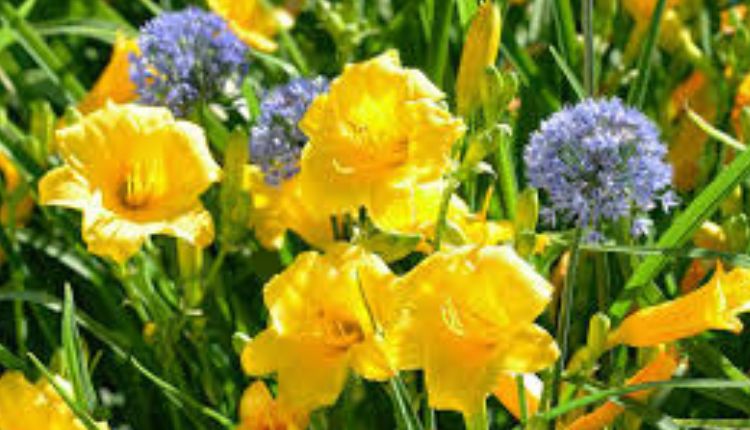“Creating a colorful and resilient summer garden with native perennials is a fantastic way to enhance the beauty of your landscape while supporting local ecosystems, states Tammy Sons of TN Nursery”. Native perennials are adapted to the local climate and soil conditions, making them low-maintenance and resilient. Here are some top native perennials to consider, along with tips for designing and caring for your summer garden.
Why Choose Native Perennials?
Adaptation and Resilience: Native perennials are well-suited to local conditions, making them more resilient to pests, diseases, and environmental stresses like drought and heat.
Low Maintenance: Once established, native perennials require less water, fertilizer, and care, making them ideal for gardeners looking to reduce maintenance efforts.
Ecological Benefits: Native plants support local wildlife, including pollinators like bees, butterflies, and birds, helping to maintain biodiversity and promote a healthy ecosystem.
Top Native Perennials for a Colorful Summer Garden
Sun-Loving Perennials
- Black-Eyed Susan (Rudbeckia hirta)
- Description:Bright yellow petals with dark brown centers.
- Bloom Time:Summer to early fall.
- Benefits:Attracts pollinators; highly drought-tolerant.
- Garden Use:Mass plantings, borders, wildflower gardens.
- Purple Coneflower (Echinacea purpurea)
- Description:Large, daisy-like flowers with purple petals and orange centers.
- Bloom Time:Summer to early fall.
- Benefits:Deer-resistant; attracts butterflies and bees.
- Garden Use:Mixed borders, pollinator gardens, naturalized areas.
- Butterfly Weed (Asclepias tuberosa)
- Description:Clusters of bright orange flowers.
- Bloom Time:Late spring to early summer.
- Benefits:Essential for monarch butterflies; very drought-tolerant.
- Garden Use:Butterfly gardens, borders, rock gardens.
- Blazing Star (Liatris spicata)
- Description:Tall spikes of purple flowers.
- Bloom Time:Mid to late summer.
- Benefits:Attracts butterflies and hummingbirds; drought-tolerant.
- Garden Use:Wildflower meadows, pollinator gardens, borders.
- Coreopsis (Coreopsis spp.)
- Description:Bright yellow, daisy-like flowers.
- Bloom Time:Early summer to fall.
- Benefits:Drought-tolerant; attracts pollinators.
- Garden Use:Mass plantings, borders, wildflower gardens.
Shade-Tolerant Perennials
- Eastern Columbine (Aquilegia canadensis)
- Description:Red and yellow bell-shaped flowers.
- Bloom Time:Spring to early summer.
- Benefits:Attracts hummingbirds; deer-resistant.
- Garden Use:Woodland gardens, shaded borders, naturalized areas.
- Wild Ginger (Asarum canadense)
- Description:Heart-shaped leaves with small, maroon flowers at the base.
- Bloom Time:
- Benefits:Ground cover; attracts pollinators.
- Garden Use:Ground cover for shaded areas, woodland gardens.
- Woodland Phlox (Phlox divaricata)
- Description:Clusters of blue, purple, or white flowers.
- Bloom Time:
- Benefits:Attracts butterflies; excellent for woodland gardens.
- Garden Use:Ground cover, woodland gardens, shaded borders.
- Christmas Fern (Polystichum acrostichoides)
- Description:Evergreen fern with dark green fronds.
- Bloom Time:Non-flowering.
- Benefits:Year-round interest; low maintenance.
- Garden Use:Woodland gardens, shaded borders, ground cover.
- Solomon’s Seal (Polygonatum biflorum)
- Description:Arching stems with bell-shaped, white flowers.
- Bloom Time:Late spring.
- Benefits:Provides architectural interest; deer-resistant.
- Garden Use:Woodland gardens, shaded borders, naturalized areas.
Designing Your Garden
Creating Layers: Use a variety of heights and textures to create a layered effect. Place taller plants like Joe-Pye Weed (Eutrochium purpureum) at the back of borders, with medium-height plants like Purple Coneflower in the middle, and shorter ground covers like Wild Ginger at the front. This layering adds depth and visual interest.
Color and Texture: Combine plants with different bloom times, colors, and textures for a dynamic display. For instance, mix the bright blooms of Black-Eyed Susan with the soft foliage of Christmas Fern. This combination creates a varied and lush garden bed.
Wildlife Habitat: Design your garden to attract and support local wildlife. Include plants that provide nectar, seeds, and shelter for birds, butterflies, and beneficial insects. Consider adding a water source, such as a birdbath or small pond, to further support local wildlife.
Planting and Care Tips
Soil Preparation: Improve your soil by adding organic matter such as compost to enhance fertility and drainage. This provides a good foundation for your native perennials to establish strong root systems.
Planting: Plant in the spring or fall when temperatures are cooler. Dig holes that are slightly larger than the plant’s root ball, place the plants, and backfill with soil. Water thoroughly to help establish the roots.
Watering: Native perennials generally need less water once established, but they will require regular watering during their first growing season. Water deeply and less frequently to encourage deep root growth.
Mulching: Apply a layer of organic mulch around your plants to retain soil moisture, suppress weeds, and regulate soil temperature. Mulch also decomposes over time, enriching the soil.
Fertilizing: Native perennials typically need little to no fertilizer. If necessary, use a slow-release, balanced fertilizer sparingly. Over-fertilizing can lead to excessive growth and reduced stress tolerance.
Pruning and Deadheading: Regularly prune and deadhead your plants to encourage new growth and prolong blooming. Removing spent flowers can also prevent self-seeding, allowing you to manage plant spread.
Seasonal Maintenance
Spring: Clean up any winter debris, refresh mulch, and check for emerging pests. Divide and transplant overcrowded perennials to maintain garden health and vigor.
Summer: Monitor for signs of drought stress and water as needed. Continue deadheading and pruning to keep your garden looking tidy and vibrant.
Fall: Prepare your garden for winter by cutting back perennials, if desired, or leaving seed heads for winter interest and wildlife food. Add a final layer of mulch to protect plant roots from freezing temperatures.
Conclusion
Transforming your garden with native perennials offers a colorful and resilient landscape that thrives in the summer heat. By carefully selecting and combining native species, you can create a vibrant, low-maintenance garden that supports local wildlife and provides continuous beauty throughout the growing season. Embrace the resilience and beauty of native perennials, and watch your garden flourish with minimal intervention.

